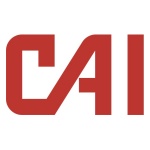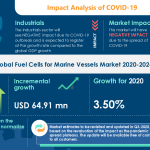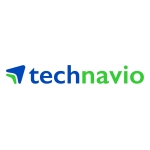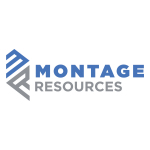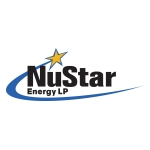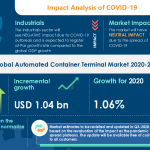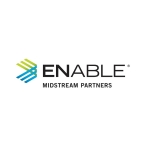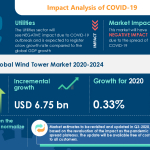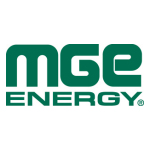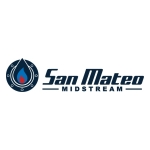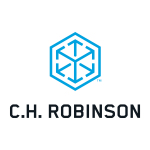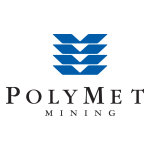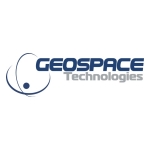NEWPORT BEACH, Calif.--(BUSINESS WIRE)--Clean Energy Fuels Corp. (NASDAQ: CLNE) (“Clean Energy” or the “Company”) today announced its operating results for the second quarter of 2020.
Andrew J. Littlefair, Clean Energy’s President and Chief Executive Officer, stated, “Our second quarter results were better than expected given the COVID-19 circumstances. I am very proud of our workforce for their dedication to performing their jobs safely and with the same quality as always. We also ended the quarter with $96 million in cash and investments and $37 million of debt. And more recently we signed another important agreement with another world class energy major, Chevron, that will expand the use of clean carbon-negative RNG for trucks in the ports of Los Angeles and Long Beach. This partnership reflects further and continued recognition of the powerful clean air solution RNG represents, which is available today to fuel near-zero natural gas trucks.”
The Company delivered 89.5 million gallons in the second quarter of 2020, a 10% decrease from 99.6 million in the second quarter of 2019. This decrease was due to a slowdown in activity in the second quarter of 2020 as a result of COVID-19, which was primarily experienced in the airports (fleet services), public transit and government fleet customer markets.
The Company’s revenue for the second quarter of 2020 was $59.9 million, a decrease of 17.2% compared to $72.3 million for the second quarter of 2019. Revenue for the second quarter of 2020 included $4.4 million from U.S. federal excise tax credits for alternative fuels ("AFTC"), which applied to vehicle fuel sales made from April 1, 2020 through June 30, 2020, and an unrealized loss of $1.5 million on commodity swap and customer fueling contracts relating to the Company’s Zero Now truck financing program. Revenue for the second quarter of 2019 included an unrealized gain of $0.6 million on commodity swap and customer fueling contracts relating to the Company’s Zero Now program. Excluding the AFTC revenue in the second quarter of 2020 and the unrealized loss and gain on commodity swap and customer fueling contracts in the second quarter of both 2020 and 2019, respectively, revenue for the second quarter of 2020 decreased by 20.6% to $57.0 million compared to $71.7 million for the second quarter of 2019. This decrease was principally due to lower volumes and lower effective fuel prices resulting from lower natural gas prices and the fuel price mix, which is based on the variation of fuel types and locations where we deliver fuel. Station construction revenue was $5.3 million for the second quarter of 2020 compared to $5.9 million for the second quarter of 2019.
The Company’s revenue for the six months ended June 30, 2020 was $145.9 million, a decrease of 2.8% compared to $150.0 million for the six months ended June 30, 2019. Revenue for the six months ended June 30, 2020 included $9.8 million from AFTC revenue, which applied to vehicle fuel sales made from January 1, 2020 through June 30, 2020, and an unrealized gain of $4.2 million on commodity swap and customer fueling contracts relating to the Company’s Zero Now truck financing program. Revenue for the six months ended June 30, 2019 included an unrealized loss of $4.4 million on commodity swap and customer fueling contracts relating to the Company’s Zero Now program. Excluding the AFTC revenue in the six months ended June 30, 2020 and the unrealized gain and loss on commodity swap and customer fueling contracts in both the 2020 and 2019 periods, revenue for the six months ended June 30, 2020 decreased by 14.6% to $131.9 million compared to $154.4 million for the six months ended June 30, 2019. This was principally due to lower effective fuel prices resulting from lower natural gas prices and the fuel price mix, which is based on the variation of fuel types and locations where we deliver fuel, and lower volumes. The decrease in revenue from lower effective fuels price and volumes was partially offset by higher station construction revenue, which was $10.8 million for the six months ended June 30, 2020 compared to $9.1 million for the six months ended June 30, 2019.
On a GAAP (as defined below) basis, net loss attributable to Clean Energy for the second quarter of 2020 was $(6.7) million, or $(0.03) per share, compared to $(5.4) million, or $(0.03) per share, for the second quarter of 2019. The second quarter of 2020 was positively affected by AFTC revenue and negatively affected by the unrealized loss on commodity swap and customer fueling contracts, while the comparable 2019 period was positively affected by the unrealized gain on commodity swap and customer fueling contracts.
On a GAAP basis, net loss attributable to Clean Energy for the six months ended June 30, 2020 was $(5.0) million, or $(0.02) per share, compared to $(16.3) million, or $(0.08) per share, for the six months ended June 30, 2019. The six months ended June 30, 2020 was positively affected by AFTC revenue and the unrealized gain on commodity swap and customer fueling contracts, while the comparable 2019 period was negatively affected by the unrealized loss on commodity swap and customer fueling contracts.
Non-GAAP loss per share and Adjusted EBITDA (each as defined below) for the second quarter of 2020 was $(0.02) and $9.2 million, respectively. Non-GAAP loss per share and Adjusted EBITDA for the second quarter of 2019 was $(0.02) and $8.9 million, respectively.
Non-GAAP loss per share and Adjusted EBITDA for the six months ended June 30, 2020 was $(0.03) and $20.5 million, respectively. Non-GAAP loss per share and Adjusted EBITDA for the six months ended June 30, 2019 was $(0.04) and $20.1 million, respectively.
Non-GAAP loss per share and Adjusted EBITDA are described below and reconciled to GAAP net loss per share attributable to Clean Energy and GAAP net loss attributable to Clean Energy, respectively.
Non-GAAP Financial Measures
To supplement the Company’s unaudited condensed consolidated financial statements presented in accordance with accounting principles generally accepted in the United States of America (“GAAP”), the Company uses non-GAAP financial measures that it calls non-GAAP income (loss) per share (“non-GAAP income (loss) per share”) and adjusted EBITDA (“Adjusted EBITDA”). Management presents non-GAAP income (loss) per share and Adjusted EBITDA because it believes these measures provide meaningful supplemental information about the Company’s performance, for the following reasons: (1) these measures allow for greater transparency with respect to key metrics used by management to assess the Company’s operating performance and make financial and operational decisions; (2) these measures exclude the effect of items that management believes are not directly attributable to the Company’s core operating performance and may obscure trends in the business; and (3) these measures are used by institutional investors and the analyst community to help analyze the Company’s business. In future quarters, the Company may make adjustments for other expenditures, charges or gains to present non-GAAP financial measures that the Company’s management believes are indicative of the Company’s core operating performance.
Non-GAAP financial measures are limited as an analytical tool and should not be considered in isolation from, or as a substitute for, the Company’s GAAP results. The Company expects to continue reporting non-GAAP financial measures, adjusting for the items described below (and/or other items that may arise in the future as the Company’s management deems appropriate), and the Company expects to continue to incur expenses, charges or gains similar to the non-GAAP adjustments described below. Accordingly, unless expressly stated otherwise, the exclusion of these and other similar items in the presentation of non-GAAP financial measures should not be construed as an inference that these costs are unusual, infrequent or non-recurring. Non-GAAP income (loss) per share and Adjusted EBITDA are not recognized terms under GAAP and do not purport to be an alternative to GAAP income (loss), GAAP income (loss) per share or any other GAAP measure as an indicator of operating performance. Moreover, because not all companies use identical measures and calculations, the Company’s presentation of non-GAAP income (loss) per share and Adjusted EBITDA may not be comparable to other similarly titled measures used by other companies.
Non-GAAP Income (Loss) Per Share
Non-GAAP income (loss) per share, which the Company presents as a non-GAAP measure of its performance, is defined as net income (loss) attributable to Clean Energy Fuels Corp., plus stock-based compensation expense, plus (minus) loss (income) from equity method investments, and plus (minus) any loss (gain) from changes in the fair value of derivative instruments, the total of which is divided by the Company’s weighted-average common shares outstanding on a diluted basis. The Company’s management believes excluding non-cash expenses related to stock-based compensation provides useful information to investors regarding the Company’s performance because of the varying available valuation methodologies, the volatility of the expense (which depends on market forces outside of management’s control), the subjectivity of the assumptions and the variety of award types that a company can use, which may obscure trends in a company’s core operating performance. Similarly, the Company believes excluding the non-cash results from equity method investments is useful to investors because these charges are not part of or representative of the core operations of the Company. In addition, the Company’s management believes excluding the non-cash loss (gain) from changes in the fair value of derivative instruments is useful to investors because the valuation of the derivative instruments is based on a number of subjective assumptions, the amount of the loss or gain is derived from market forces outside of management’s control, and the exclusion of these amounts enables investors to compare the Company’s performance with other companies that do not use, or use different forms of, derivative instruments.
The table below shows GAAP and non-GAAP loss attributable to Clean Energy per share and also reconciles GAAP net loss attributable to Clean Energy to an adjusted net loss figure used in the calculation of non-GAAP loss per share:
|
|
|
|
|
|
|
|
|
|
|
|
|
|
|
Three Months Ended
|
|
Six Months Ended
|
|
|
June 30,
|
|
June 30,
|
(in thousands, except share and per share data)
|
|
2019
|
|
|
2020
|
|
|
2019
|
|
|
2020
|
|
Net loss attributable to Clean Energy Fuels Corp.
|
|
$
|
(5,383
|
)
|
|
$
|
(6,736
|
)
|
|
$
|
(16,329
|
)
|
|
$
|
(5,032
|
)
|
Stock-based compensation
|
|
|
918
|
|
|
|
760
|
|
|
|
2,164
|
|
|
|
1,814
|
|
Loss from equity method investments
|
|
|
33
|
|
|
|
502
|
|
|
|
500
|
|
|
|
357
|
|
Loss (gain) from change in fair value of derivative instruments
|
|
|
(582
|
)
|
|
|
1,022
|
|
|
|
5,992
|
|
|
|
(4,205
|
)
|
Adjusted (non-GAAP) net loss
|
|
$
|
(5,014
|
)
|
|
$
|
(4,452
|
)
|
|
$
|
(7,673
|
)
|
|
$
|
(7,066
|
)
|
Diluted weighted-average common shares outstanding
|
|
|
204,653,723
|
|
|
|
200,670,137
|
|
|
|
204,426,459
|
|
|
|
202,831,346
|
|
GAAP loss attributable to Clean Energy Fuels Corp. per share
|
|
$
|
(0.03
|
)
|
|
$
|
(0.03
|
)
|
|
$
|
(0.08
|
)
|
|
$
|
(0.02
|
)
|
Non-GAAP loss attributable to Clean Energy Fuels Corp. per share
|
|
$
|
(0.02
|
)
|
|
$
|
(0.02
|
)
|
|
$
|
(0.04
|
)
|
|
$
|
(0.03
|
)
|
Adjusted EBITDA
Adjusted EBITDA, which the Company presents as a non-GAAP measure of its performance, is defined as net income (loss) attributable to Clean Energy, plus (minus) income tax expense (benefit), plus interest expense, minus interest income, plus depreciation and amortization expense, plus stock-based compensation expense, plus (minus) loss (income) from equity method investments, and plus (minus) any loss (gain) from changes in the fair value of derivative instruments. The Company’s management believes Adjusted EBITDA provides useful information to investors regarding the Company’s performance for the same reasons discussed above with respect to non-GAAP income (loss) per share. In addition, management internally uses Adjusted EBITDA to determine elements of executive and employee compensation.
The table below shows Adjusted EBITDA and also reconciles this figure to GAAP net loss attributable to Clean Energy:
|
|
|
|
|
|
|
|
|
|
|
|
|
|
|
Three Months Ended
|
|
Six Months Ended
|
|
|
June 30,
|
|
June 30,
|
(in thousands, except share and per share data)
|
|
2019
|
|
|
2020
|
|
|
2019
|
|
|
2020
|
|
Net loss attributable to Clean Energy Fuels Corp.
|
|
$
|
(5,383
|
)
|
|
$
|
(6,736
|
)
|
|
$
|
(16,329
|
)
|
|
$
|
(5,032
|
)
|
Income tax expense
|
|
|
66
|
|
|
|
78
|
|
|
|
126
|
|
|
|
156
|
|
Interest expense
|
|
|
1,842
|
|
|
|
1,841
|
|
|
|
3,733
|
|
|
|
4,051
|
|
Interest income
|
|
|
(567
|
)
|
|
|
(273
|
)
|
|
|
(1,147
|
)
|
|
|
(654
|
)
|
Depreciation and amortization
|
|
|
12,605
|
|
|
|
12,050
|
|
|
|
25,084
|
|
|
|
23,974
|
|
Stock-based compensation
|
|
|
918
|
|
|
|
760
|
|
|
|
2,164
|
|
|
|
1,814
|
|
Loss from equity method investments
|
|
|
33
|
|
|
|
502
|
|
|
|
500
|
|
|
|
357
|
|
Loss (gain) from change in fair value of derivative instruments
|
|
|
(582
|
)
|
|
|
1,022
|
|
|
|
5,992
|
|
|
|
(4,205
|
)
|
Adjusted EBITDA
|
|
$
|
8,932
|
|
|
$
|
9,244
|
|
|
$
|
20,123
|
|
|
$
|
20,461
|
|
Definition of “Gallons Delivered”
The Company defines “gallons delivered” as its gallons sold as compressed natural gas (“CNG”) and liquefied natural gas (“LNG”), along with its gallons associated with providing operations and maintenance services, in each case delivered to its customers in the applicable period, plus the Company’s proportionate share of gallons delivered by joint ventures in the applicable period. RNG sold as vehicle fuel, is sold under the brand name Redeem™ and is included in the CNG or LNG amounts as applicable based on the form in which it was sold.
The table below shows gallons delivered for the three and six months ended June 30, 2019 and 2020:
|
|
|
|
|
|
|
|
|
|
|
|
|
|
|
Three Months Ended
|
|
Six Months Ended
|
|
|
June 30,
|
|
June 30,
|
Gallons Delivered (in millions)
|
|
2019
|
|
2020
|
|
2019
|
|
2020
|
CNG
|
|
|
83.8
|
|
|
73.6
|
|
|
162.3
|
|
|
157.7
|
LNG
|
|
|
15.8
|
|
|
15.9
|
|
|
32.5
|
|
|
31.1
|
Total
|
|
|
99.6
|
|
|
89.5
|
|
|
194.8
|
|
|
188.8
|
Sources of Revenue
The following table shows the Company's sources of revenue for the three and six months ended June 30, 2019 and 2020:
|
|
|
|
|
|
|
|
|
|
|
|
|
|
|
Three Months Ended
|
|
Six Months Ended
|
|
|
June 30,
|
|
June 30,
|
Revenue (in millions)
|
|
2019
|
|
2020
|
|
2019
|
|
2020
|
Volume-related (1)
|
|
$
|
66.3
|
|
$
|
50.2
|
|
$
|
140.8
|
|
$
|
125.3
|
Station construction sales
|
|
|
5.9
|
|
|
5.3
|
|
|
9.1
|
|
|
10.8
|
AFTC (2)
|
|
|
—
|
|
|
4.4
|
|
|
—
|
|
|
9.8
|
Other
|
|
|
0.1
|
|
|
—
|
|
|
0.1
|
|
|
—
|
Total revenue
|
|
$
|
72.3
|
|
$
|
59.9
|
|
$
|
150.0
|
|
$
|
145.9
|
| ________________________ |
(1)
|
|
For the three and six months ended June 30, 2020, volume-related revenue includes an unrealized gain (loss) from the change in fair value of commodity swap and customer fueling contracts of $(1.5) million and $4.2 million, respectively. For the three and six months ended June 30, 2019, volume-related revenue includes an unrealized gain (loss) from the change in fair value of commodity swap and customer contracts of $0.6 million and $(4.4) million, respectively. |
|
|
|
(2)
|
|
In 2019, we recognized AFTC revenue for the vehicle fuel we sold in 2018 and 2019 in the three months ended December 31, 2019. |
2020 Outlook
We revised our 2020 outlook on May 7, 2020 (the “revised 2020 outlook”) due to the evolving uncertainties surrounding the impact of the COVID-19 pandemic on the economy, and to our company, as well as the volatility in oil markets. During the second quarter of 2020, we saw an overall decline in volumes of 10% compared to the same period in 2019, principally around airports and transit authorities with year-over-year declines ranging from 25% to 45%, with refuse and over-the-road trucking growing between 2% and 7%. Our revised 2020 outlook assumed the overall declining volumes would extend through June 30, 2020 with a gradual recovery going into the third quarter of 2020 toward flat to low single digit percentage overall volume increases on a year-over-year basis. While we believe the overall volume decline curve hit bottom during the second quarter and has flattened out exiting the second quarter, the effects of the COVID-19 pandemic have been prolonged further than our revised 2020 outlook contemplated. We now assume such prolonged impact of COVID-19 will delay and flatten the curve of the gradual recovery we contemplated in our revised 2020 outlook. This will also delay and flatten the recovery of AFTC eligible volumes, AFTC revenue and volume related gross profit margins on those sectors experiencing the effects of the prolonged economic slowdown. However, we have also experienced lower operating expenses than what was contemplated in our revised 2020 outlook due to lower spending as a result of reduced business activities. We expect this trend of lower spending to continue, which will help mitigate the prolonged reduction in gross profit margins associated with prolonged year-over-year declines in our overall volume. We also recorded a $2.5 million station asset disposal gain during the second quarter, which helped mitigate the negative impact of COVID-19 on our 2020 financial results. We believe the lower gross profit margins from lower volumes can be sufficiently mitigated by our continued lower operating expenses and the station asset disposal gain, such that we are not changing our revised 2020 outlook for our GAAP net loss or Adjusted EBITDA at this time. As such, our GAAP net income (loss) for 2020 is still expected to be approximately a loss of $11.0 million, assuming no unrealized gains or losses on commodity swap and customer fueling contracts. Changes in diesel and natural gas market conditions resulting in unrealized gains or losses on the Company’s commodity swap contracts could significantly impact the Company’s estimated GAAP net income for 2020. Adjusted EBITDA for 2020 is still expected to be approximately $45.0 million. These expectations also exclude the impact of any acquisitions, divestitures, transactions or other extraordinary events including a deterioration in or lack of any recovery from the COVID-19 pandemic. Additionally, the expectations regarding 2020 Adjusted EBITDA assume the calculation of this non-GAAP financial measure in the same manner as described above and without adjustments for any other items that may arise during 2020 and that management deems appropriate to exclude. These expectations are forward-looking statements and are qualified by the statement under “Safe Harbor Statement” below.
|
|
|
|
(in thousands)
|
|
2020 Outlook
|
GAAP Net income (loss) attributable to Clean Energy Fuels Corp.
|
|
$
|
(11,000
|
)
|
Income tax expense (benefit)
|
|
|
—
|
|
Interest expense
|
|
|
5,500
|
|
Interest income
|
|
|
(2,000
|
)
|
Depreciation and amortization
|
|
|
48,500
|
|
Stock-based compensation
|
|
|
4,000
|
|
Loss (income) from equity method investments
|
|
|
—
|
|
Loss (gain) from change in fair value of derivative instruments
|
|
|
—
|
|
Adjusted EBITDA
|
|
$
|
45,000
|
|
Today’s Conference Call
The Company will host an investor conference call today at 4:30 p.m. Eastern time (1:30 p.m. Pacific). Investors interested in participating in the live call can dial 1.877.407.4018 from the U.S. and international callers can dial 1.201.689.8471. A telephone replay will be available approximately two hours after the call concludes through Sunday, September 6, 2020, by dialing 1.844.512.2921 from the U.S., or 1.412.317.6671 from international locations, and entering Replay Pin Number 13706388. There also will be a simultaneous, live webcast available on the Investor Relations section of the Company’s web site at www.cleanenergyfuels.com, which will be available for replay for 30 days.
About Clean Energy Fuels Corp.
Clean Energy Fuels Corp. is North America’s leading provider of the cleanest fuel for the transportation market. Through its sales of Redeem™ renewable natural gas (RNG), which is derived from biogenic methane produced by the breakdown of organic waste, Clean Energy helps thousands of vehicles, from airport shuttles to city buses to waste and heavy-duty trucks, to reduce their amount of climate-harming greenhouse gas by at least 70% and up to 300% depending on the RNG feedstock. Clean Energy can deliver Redeem through compressed natural gas (CNG) and liquefied natural gas (LNG) to its network of approximately 550 fueling stations across the U.S. and Canada. Clean Energy builds and operates CNG and LNG fueling stations for the transportation market, owns natural gas liquefaction facilities in California and Texas, and transports bulk CNG and LNG to non-transportation customers around the U.S. For more information, visit www.CleanEnergyFuels.com.
Safe Harbor Statement
This press release contains forward-looking statements within the meaning of Section 27A of the Securities Act of 1933, as amended, and Section 21E of the Securities Exchange Act of 1934, as amended, including statements about, among other things, the Company’s outlook for fiscal 2020, the expected impact of the COVID-19 pandemic on the Company’s business, including volumes delivered, and liquidity, and the effect, if any, of the foregoing on the Company’s performance, financial condition and ability to execute its strategic initiatives.
Forward-looking statements are statements other than historical facts and relate to future events or circumstances or the Company’s future performance, and they are based on the Company’s current assumptions, expectations and beliefs concerning future developments and their potential effect on the Company and its business. As a result, actual results, performance or achievements and the timing of events could differ materially from those anticipated in or implied by these forward-looking statements as a result of many factors including, among others: the COVID-19 pandemic and the measures taken to prevent its spread and the related impact on our operations, liquidity and financial condition; the Company’s history of net losses and the possibility the Company incurs additional net losses in the future; the willingness of fleets and other consumers to adopt natural gas as a vehicle fuel, and the rate and level of any such adoption; future supply, demand, use and prices of crude oil, gasoline, diesel, natural gas, and other vehicle fuels, including overall levels of and volatility in these factors; natural gas vehicle and engine cost, fuel usage, availability, quality, safety, convenience, design, performance and residual value, as well as operator perception with respect to these factors, in general and in the Company’s key customer markets, including heavy-duty trucking; the Company’s ability to execute its Zero Now truck financing program, a key strategic initiative related to the market for natural gas heavy-duty trucks, and the effect of this initiative on the Company’s business, prospects, performance and liquidity; the Company’s ability to capture a substantial share of the market for alternative vehicle fuels and vehicle fuels generally and otherwise compete successfully in these markets, including in the event of improvements in or perceived advantages of non-natural gas vehicle fuels or engines powered by these fuels or other competitive developments; the availability of environmental, tax and other government regulations, programs and incentives that promote natural gas, such as AFTC, or other alternatives as a vehicle fuel, including long-standing support for gasoline- and diesel-powered vehicles and growing support for electric and hydrogen-powered vehicles that could result in programs or incentives that favor these or other vehicles or vehicle fuels over natural gas; future availability of capital, which may include equity or debt financing, in the amounts and at the times needed to fund any growth in the Company’s business and the repayment of its debt obligations (whether at or before their due dates) or other expenditures, as well as the terms and other effects of any such capital-raising transaction; the effect of, or potential for changes to greenhouse gas emissions requirements or other environmental regulations applicable to vehicles powered by gasoline, diesel, natural gas or other vehicle fuels and crude oil and natural gas fueling, drilling, production, transportation or use; the Company’s ability to manage and grow its RNG business, including its ability to continue to receive revenue from sales of tradable credits the Company generates by selling conventional and renewable natural gas as vehicle fuel and the effect of any increase in competition for RNG supply; the Company’s ability to manage and grow its business of transporting and selling CNG for non-vehicle purposes via virtual natural gas pipelines and interconnects; the Company’s ability to accurately predict natural gas vehicle fuel demand in the geographic and customer markets in which it operates and effectively calibrate its strategies, timing and levels of investments to be consistent with this demand; the Company’s ability to recognize the anticipated benefits of its CNG and LNG fueling station network; construction, permitting and other factors that could cause delays or other problems at station construction projects; the Company’s ability to manage the safety and environmental risks inherent in its operations; the Company’s compliance with all applicable government regulations; the Company’s ability to execute and realize the intended benefits of any acquisitions, divestitures, investments or other strategic relationships or transactions; and general political, regulatory, economic and market conditions.
Contacts
Investor Contact:
This email address is being protected from spambots. You need JavaScript enabled to view it.
News Media Contact:
Raleigh Gerber
Manager of Corporate Communications
949.437.1397
Read full story here 


